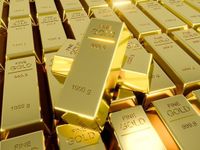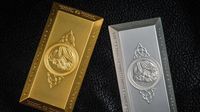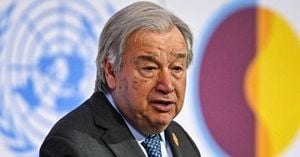Gold and silver prices soared to new record highs on September 1, 2025, as global investors responded to mounting economic uncertainties, shifting central bank policies, and volatile geopolitical developments. While U.S. markets took a pause for Labor Day, financial centers across Europe and Asia buzzed with activity, reflecting a world in the throes of rapid change and heightened risk appetite.
According to Eurasia Business News, gold futures traded around $3,546.8 per ounce—up about 0.87% from the previous close—during a session that saw the daily range stretch from $3,506 to $3,557.1 per ounce. European midday trading, as reported by Dow Jones Newswires, saw gold futures hit an intraday high of $3,557.10 per troy ounce, with prices up 0.8% to $3,543.80 per ounce. The precious metal is now up more than 34% year-to-date, underscoring its role as a safe haven amid a storm of economic and political uncertainty.
Silver, too, joined the rally. On the same day, silver prices climbed to about $41.615 per ounce—an increase of 2.19%—with a daily range between $40.555 and $41.725 per ounce. In India, the domestic futures market echoed the global trend: MCX Gold October 3 contracts jumped over 2% to a record ₹1,05,937 per 10 grams, while MCX Silver December 5 contracts hit an all-time high of ₹1,24,990 per kg, surging more than 2%, according to Mint.
What’s behind this dramatic surge? Analysts point to a confluence of factors, with the prospect of a U.S. Federal Reserve interest rate cut at the top of the list. After Fed Chair Jerome Powell signaled an openness to easing policy in his Jackson Hole speech, other officials quickly followed suit. Fed Governor Christopher Waller said he would "support an interest-rate cut in September and further reductions over the next three to six months," as reported by Reuters. San Francisco Fed Bank President Mary Daly echoed this sentiment, expressing support for a rate cut given risks to the labor market. The CME FedWatch tool now places the probability of a 25-basis-point rate cut this month at a striking 87%.
Geopolitical tensions are also fanning the flames. President Donald Trump’s unpredictable tariff policies, particularly his recent doubling down on tariffs on India and ongoing trade negotiations with key partners, have injected fresh uncertainty into the global economic outlook. As Mint notes, "Trump’s changing tones and unpredictable policy moves are key positives for gold prices as the yellow metal gains traction in times of economic uncertainty." India, for its part, has indicated it will only pursue a trade deal if secondary tariffs are first removed.
Another critical ingredient: the weakening U.S. dollar. The dollar index slipped about 0.10% on August 31 and fell more than 2% over the preceding month. Because gold is priced in dollars, a softer greenback makes the metal more attractive to buyers using other currencies, further boosting demand.
Market strategists and commodity analysts are advising caution, but not retreat. Manoj Kumar Jain of Prithvifinmart Commodity Research told Mint, "We suggest avoiding any kind of short selling in gold and silver and maintaining a buy-on-dips strategy on corrective dips. Gold is expected to test ₹1,07,000, and silver is expected to test ₹1,27,000 in the short term." Jigar Trivedi, Senior Research Analyst at Reliance Securities, added, "Gold prices neared a record high as investors weighed the future of the Federal Reserve rate cuts and uncertainty over Trump’s tariffs. Support for gold also came from last week’s US inflation data, which strengthened expectations of a Fed rate cut later this month."
Stock markets, meanwhile, reflected the shifting tides. In Hong Kong, Alibaba’s stock soared by about 19% after reporting better-than-expected quarterly earnings and robust growth in its AI and cloud business. This propelled the Hang Seng Index up 539 points (2.2%) to close at 25,617—one of its biggest gains in two weeks, according to Eurasia Business News. European markets also posted gains: the Euro Area’s EU50 index rose 0.23% to 5,364 points, the STOXX Europe 600 index climbed 0.3%, and France’s CAC 40 edged up 0.12% to 7,713 points.
Within the CAC 40, automotive stocks were the day’s standouts, with Stellantis and Renault rising 1.12% and 1.56% respectively. Healthcare, manufacturing, and defense stocks also saw notable moves. Novo Nordisk gained 2.9% on positive news about its weight-loss drug, while defense contractors Rheinmetall and BAE Systems were up 2.2% and 1.9% amid talk of potential EU military deployments related to Ukraine.
Gold miners benefited handsomely from the rally. Shares in Hochschild Mining climbed 6.2%, Fresnillo rose 1.7%, and Harmony Gold advanced 4.6%, as reported by Dow Jones Newswires. London-listed gold miners, in particular, were buoyed by expectations of a U.S. interest rate cut and ongoing tariff uncertainty.
Other commodities and energy markets were equally dynamic. Brent crude oil rose 1.2% to $68.31 a barrel, while European benchmark gas increased 1.6% to 32.13 euros per megawatt-hour. Copper prices were mixed, with LME three-month copper futures down 0.1% to $9,892.50 a metric ton, reflecting thin trading volumes and shifting supply-demand dynamics. Meanwhile, European gas prices remained below 32 euros per megawatt hour, with storage levels across the EU at more than 77% full, easing fears of supply shortages ahead of the winter heating season.
Cryptocurrency markets presented a more cautious picture. Bitcoin traded around $108,250, down about 0.5% from the previous day, as traders braced for the historically weak September period. Institutional ETF outflows and seasonal selling pressure were noted, though some large holders continued to accumulate. Ethereum remained relatively stable with modest fluctuations around $3,430.
Despite the day’s bullish tone, some caution persisted. European long-term bonds faced pressure, with yields rising and signaling investor wariness. The French market, in particular, was described as "largely at a standstill," with the lack of U.S. market activity muting new initiatives and investors awaiting crucial Federal Reserve data later in the week that could set the direction for markets globally.
Looking ahead, the spotlight remains on the Federal Reserve’s upcoming policy meeting on September 16-17, where the U.S. central bank will decide on interest rates. Investors are also closely watching U.S. labor market data—including job openings, ADP employment, and non-farm payrolls—which could further shape expectations for monetary policy and, by extension, gold and silver prices.
The world’s financial markets are clearly at an inflection point, with gold and silver shining as beacons for those seeking stability in turbulent times. Whether this rally marks the beginning of a new era or simply a pause before the next storm, investors and analysts alike are keeping their eyes wide open—and their strategies nimble.





